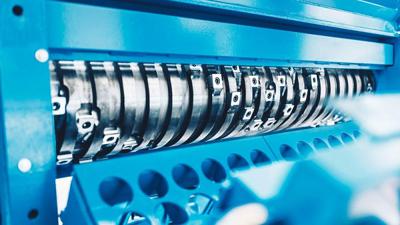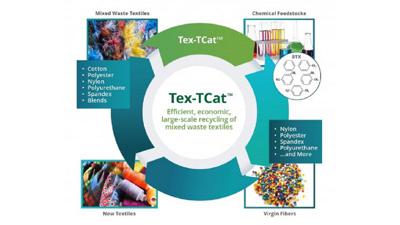Fabricademy
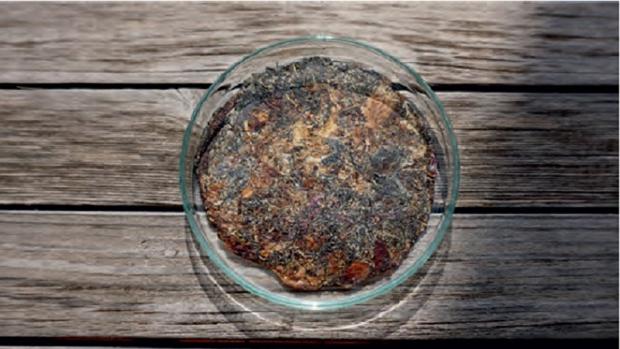
Oyster mycelium grown on denim textile waste, food waste and coffee grounds after post-processing (Source: Fabricademy)
This article investigates ways to produce flexible mycelium materials through the biodegradation of various combinations of denim textile waste, synthetic textile waste, food waste and spent coffee grounds. Pleurotus ostreatus (oster) mycelium growth on combinations of the previously cited wastes and bioremediation capacity were assessed.
The fashion industry produces over 100 billion garments per year, of which 60 % are plastic-based and 85 % will end up in landfills before the end of the year [1]. Various micro-organisms such as fungi are capable of biodegrading cellulose and other complex plastic molecules: soil-associated filamentous fungi have the natural capability to degrade ligno-cellulosic biomass [2], Pestalotiopsis microspora is capable of using polyurethane (PUR) as its sole carbon source [3]. Pleurotus ostreatus (Oyster) is a common edible fungal strain reported to be able to break down green polyethylene (PE) [4] and to grow on oil contaminated soil [5]. Fungi biodegrade molecules through their vegetative part, the mycelium. Interestingly, mycelium is also being used in the fashion industry for the production of vegan leather-like materials [6, 7]. Considering the dual role of mycelium as decomposer and material, an opportunity to rethink the linearity of the textile industry emerges.
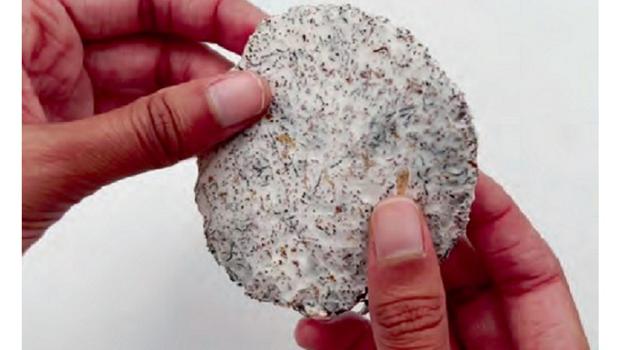
Oyster mycelium grown on denim textile waste, food waste and coffee grounds on day 45. Composite material before post processing
Growth assays on textile wasteGrowth assays of the mycelium of P. ostreatus were made on combinations of denim textile waste or synthetic textile waste with spent coffee grounds and/or food waste. Synthetic and denim textile waste were provided by Fab Lab Barcelona, issued from textile scraps. Food waste was obtained by recycling vegetable peels (carrots, cucumbers, onions, celery, broccoli) from domestic waste. Spent coffee grounds waste was obtained from domestic waste.
From the waste shown in Table 1, waste mixes were prepared and put into petri dishes. For more accurate interpretation of the results, all the experiments were carried out in duplicates. Once put in the petri dishes, all the samples were pressure cooked for 2.5 hours to avoid any kind of contaminations and then inoculated with 1 cm2 of P. ostreatus grown on agar.
The results on denim textile waste are very promising, as P. ostreatus mycelium grew strong on this textile mixed with additives (food and coffee wastes) and even grew on denim textile waste only. P. ostreatus also grew on mixes involving synthetic textile waste and food waste. Some of the samples (denim + food waste + coffee for instance) grew very strong and, after some weeks of growth, led to a complete colonization of every free spot of the petri dish. However, the mycelium did not entirely degrade the fibers but only partially digested it, leading to a composite made of the mycelium and remainder of its substrate. Provided the soft nature of the substrate, the textile waste and food waste mycelium composite are also malleable, this could be interesting for further flexible materials application with the adequate post-processing.
Post-processing of composites
According to [8], mycelium has to be heat pressed, plasticized and coated. An optional step of deacetylation followed by crosslinking is possible before plasticizing. The overall information about the process was very vague so trial and error was used to find out what process would work at this small scale.
After trying various post-processing protocols, the best working one for most mycelium samples was the following:
• heat press the live mycelium 3 times for 20 s at 150 °C,
• put it in a 20-40 % (depending on the mycelium) glycerol bath overnight,
• dry at 35 °C for 8 hours,
• coat with melted wax,
• heat press 3 times for 20 s at 150 °C to make the wax layer even.
A survey was conducted on a random audience to know their feeling on the final post-processed samples and see how the public would perceive the material. This survey was used to know if the samples could be well perceived and what should be improved. Here are the main results and trends coming out of it:
- the material has an organic and natural look,
- the texture of the material is pleasant,
- the material is too fragile,
- the smell of the material is neutral.
These results are very encouraging considering these samples are the results of only 3 months of research. The information that could be extracted from this perception survey is guiding the next research steps towards the improvement of the growth conditions to have a more solid and less fragile composite.
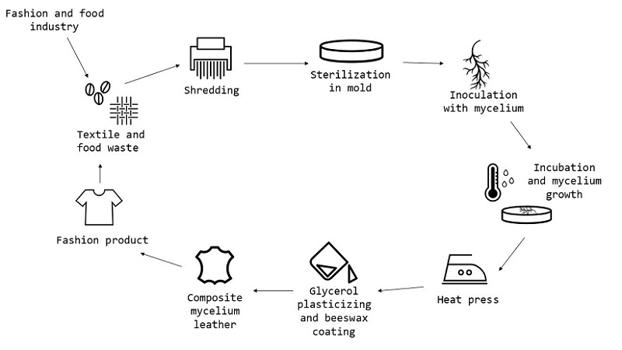
Composite sustainable mycelium leather production process in its circular fashion model
Discussion and conclusionExperiments of growing oyster on pure denim textile showed growth, indicating oyster mushroom mycelium is truly feeding from the denim textile and attesting of the bioremediation. However, oyster mycelium did not grow on synthetic textile waste only, meaning composite leather made from synthetic textile waste and food waste are not bioremediating the textile waste but upcycling it into a new function. An interesting perspective to explore would be to «train» the mycelium to grow on textile substrates and eventually make it capable of digesting textile waste more efficiently (growing fast and strong on textile waste alone).
Adequate and 100 % natural post processing protocols were established during this research. However, post-processing of the composite leather could be more extensively explored to find more suitable solutions. What came out of the material analysis survey is that the composite leather looks fragile and is not flexible enough. The issue of the flexibility could be targeted by a better plasticizing process. In the same way, the fragility and brittleness issues can be targeted by a better growth of the mycelium or by a better structuring the fibers when inoculating them. For instance, felting the fibers prior to inoculation could increase tearing resistance.
The next goals for this new material are to perfect the best samples and upscale them to be able to produce recyclable garments, accessories, and shoes, thus creating a circular model of fashion as opposed to the linear model we currently know.
This research is part of the author’s postgraduate project at Fabricademy, Textile & Technology Academy, FabLab Barcelona (IAAC). This project was awarded with the Young Scientist Award organized by Lenzing AG, Lenzing/Austria, in the category of textile recycling.
References
[1] UNEP (2018), Putting the brakes on fast fashion. https://www.unep.org/news-and-stories/story/putting-brakes-fast-fashion
[2] Hawksworth, D.L.; Lücking, R.: Fungal diversity revisited: 2.2 to 3.8 million species, The Fungal Kingdom (2017) 79-95; https://doi.org/10.1128/9781555819583.CH4
[3] Russell, J.R.; Huang, J.; Anand, P., Kucera, K., Sandoval, A.G., Dantzler, K.W., Hickman, D.S., Jee, J., Kimovec, F.M., Koppstein, D., Marks, D.H.; Mittermiller, P.A.; Núñez, S.J.; Santiago, M.; Townes, M.A.; Vishnevetsky, M.; Williams, N.E.; Vargas, M.P.N.; Boulanger, L.A.; Strobel, S.A.: Biodegradation of polyester polyurethane by endophytic fungi, Applied and Environmental Microbiology 77 (2011) 6076-6084; https://doi.org/10.1128/AEM.00521-11/ASSET/1E80295E-A9A9-486F-8F9E-1C939B173F7E/ASSETS/GRAPHIC/ZAM9991024370007.JPEG
[4] da Luz, J.M.R.; Paes, S.A.; Ribeiro, K.V.G.; Mendes, I.R.; Kasuya, M.C.M.: Degradation of Green Polyethylene by Pleurotus ostreatus, PLoS ONE, 10 (2015) 6; https://doi.org/10.1371/Journal.Pone.0126047
[5] Biomar Microbial Technologies (2019): Mycoremediation: Can fungi help to save the world? https://biomarmt.com/en/mycoremediation-can-fungi-help-to-save-the-world/
[6] Gandia, A.; van den Brandhof, J.G.; Appels, F.V.W.; Jones, M.P.: Flexible Fungal Materials: Shaping the Future, Trends in Biotechnology 39 (2021) 1321-1331; https://doi. org/10.1016/j.tibtech.2021.03.002
[7] Jones, M.; Gandia, A.; John, S.; Bismarck, A.: Leather-like material biofabrication using fungi, Nature Sustainability 4 (2021) 9-16; https://doi.org/10.1038/s41893-020-00606-1
[8] Vandelook, S.; Elsacker, E.; van Wylick, A.; de Laet, L.; Peeters, E.: Current state and future prospects of pure mycelium materials, Fungal Biology and Biotechnology 8 (2021); https://doi.org/10.1186/s40694-021-00128-1
Annah-Ololade Sangosanya
Fabricademy, Institute for Advanced Architecture of Catalonia
Barcelona/Spain
This Article was published in Technical Textiles 5/2022.
Fabricademy, Institute for Advanced Architecture of Catalonia
Barcelona/Spain
This Article was published in Technical Textiles 5/2022.

